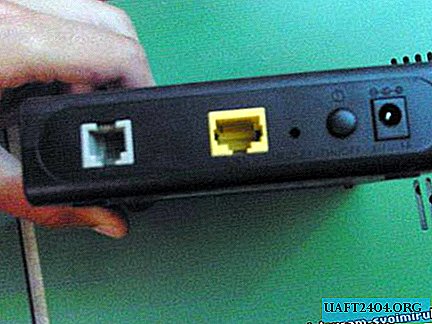Share
Pin
Tweet
Send
Share
Send

Such an antenna has a directional action, which may not always be a virtue, but even a disadvantage. An example is this: you need to amplify the signal of your router so that you can catch it anywhere in your home. If you use a directional antenna, then the signal will most likely be well accessible only in the field of action of this antenna. Surely this will be only one room where it will be directed. It is good to use such an antenna only for long-distance communications, provided that you know where to direct it.
To amplify your WIFI signal in all directions, an antenna is suitable, which I will show you. In its directivity characteristics, it is close to a whip antenna, with the exception of greater sensitivity.
By structure, this is actually the same biquadrat, only twice directed in opposite directions. Plus, this antenna is many times simpler than the classic biquadrat, since it has neither a stand nor a reflector.

How to calculate the antenna?
Just please do not be alarmed, mathematics is fifth grade. We need to calculate only one shoulder, since the antenna is square. But first you need to find out at what frequency we will make the antenna. Personally, in the example I will do it under WI-FI. It is known that the WI-FI frequency is approximately 2.4 GHz or 2400 MHz (there is also an even more modern Wi-Fi - 5500 MHz). If you do it under 3G - 2100 MHz, and 4G (YOTA) - 2600 MHz.
We take the propagation velocity of radio waves (300,000 km / s) and divide by the desired frequency (2400 MHz) in kilohertz.
300.000 / 2.400.000 = 0.125 m
This we got the wavelength. Now divide by four and get the length of the shoulder of the square.
0.125 / 4 approximately will turn out 0.0315 m. Convert to millimeters for convenience and get 31.5 mm.
Making a DIY DIY Wi-Fi Antenna
Bremen thick wire 2-3 mm thick. And a template carved from a piece of aluminum. You can certainly do without him, but with him easier.


We bend two loops from one wire and two from another. The gap should be between the squares.



Then, with masking tape, temporarily fix the squares crosswise so that it is easier to solder. And I solder the middle from above so that the structure becomes stiff.



Now you need to take a thick piece of cable with a connector (you can take it from the same whip antenna).


Insert into the antenna and solder. The middle wire to the top, and the lower shoulders of the squares to the common.



The antenna is ready. To complete, you can fill the soldered joint with hot glue and paint.

Antenna test
Compare the signal strength with a whip antenna, which came originally with a router.

Whip antenna:

Now in comparison. The first pin, and then our omnidirectional biquadrat.

It can be seen that our antenna receives and amplifies the signal 30% better. Here is the result of the work.
A good signal level is a guarantee of high speed Internet, which means a guarantee of stable operation. 30 percent is a very high indicator, given the fact that nothing had to be radically changed.
Build your simple antenna for 3G, 4G or Wi-Fi and no longer suffer from an unstable and weak signal.
Watch a video about building an antenna
Share
Pin
Tweet
Send
Share
Send











